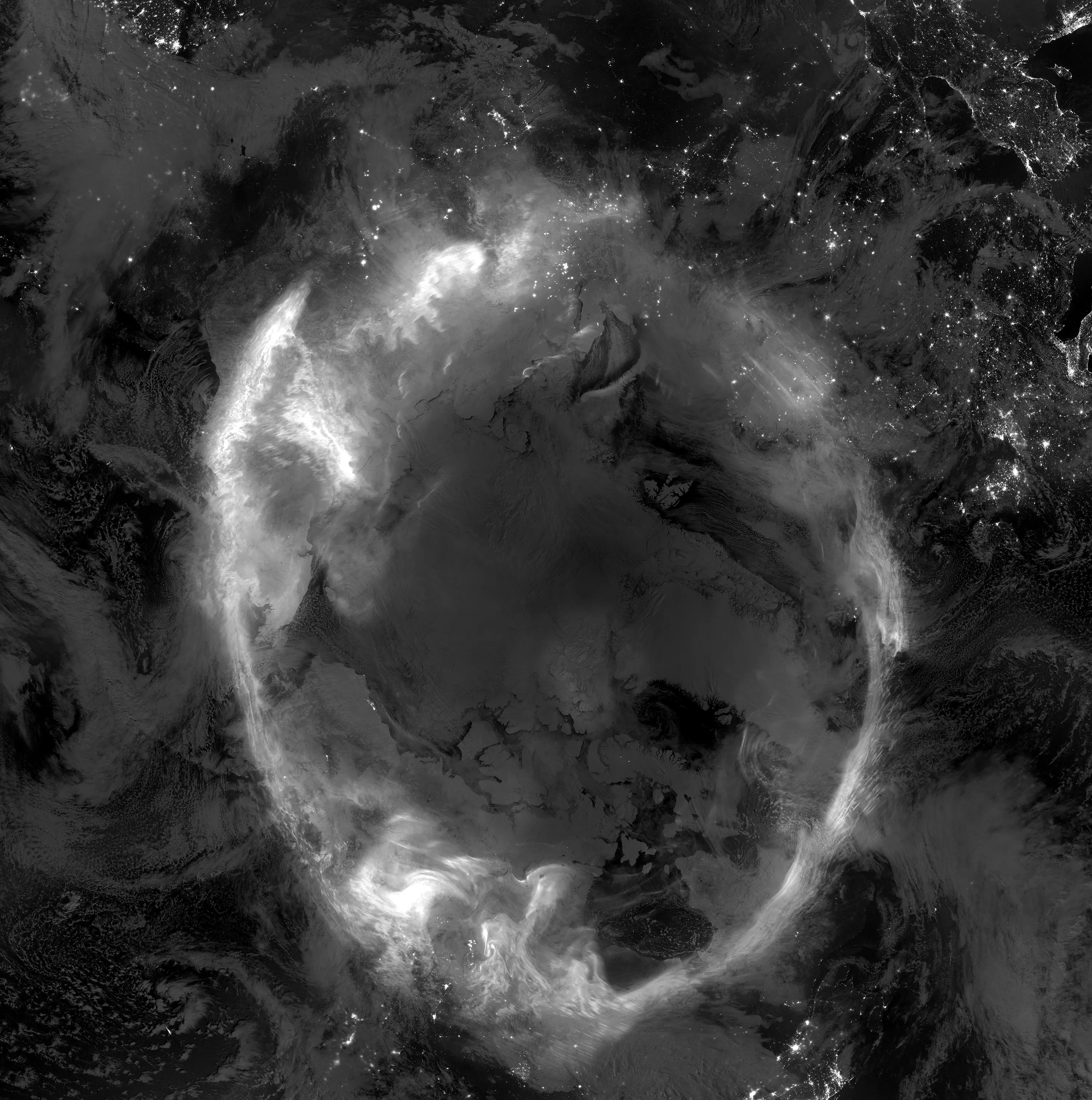The aurora borealis, also known as the Northern Lights, appears like a colorful light show in the sky with amazing colors, including (mostly) green, with hues of yellow, purple, pink, and white.
People who live near and around Earth’s North Pole, in places like Canada, Greenland, and Alaska, see the phenomenon from the ground most often but it can occasionally be seen from other areas. They can be observed by the National Oceanic and Atmospheric Administration (NOAA) and the National Aeronautics and Space Administration (NASA)’s Joint Polar Satellite System (JPSS) satellites.
These satellites have an instrument called the Visible Infrared Imaging Radiometer Suite (VIIRS) that captures images of the aurora borealis on Earth at night. VIIRS has a sensor, a tool that collects data about light, called the Day/Night band. This tool allows us to see how strong, or bright, light is and where it is located.
It is combined with other images of the Earth to make black and white maps that show where the lights are and how bright they are. Sometimes artists use computers to make the lights easier to see.
How does the aurora borealis happen?
The aurora borealis happens because of something called “space weather.” The Sun is sending out invisible energy and light particles. When these meet Earth’s invisible magnetic shield, they create a colorful dance in the sky that makes the sky glow in shades of green, pink, and purple.
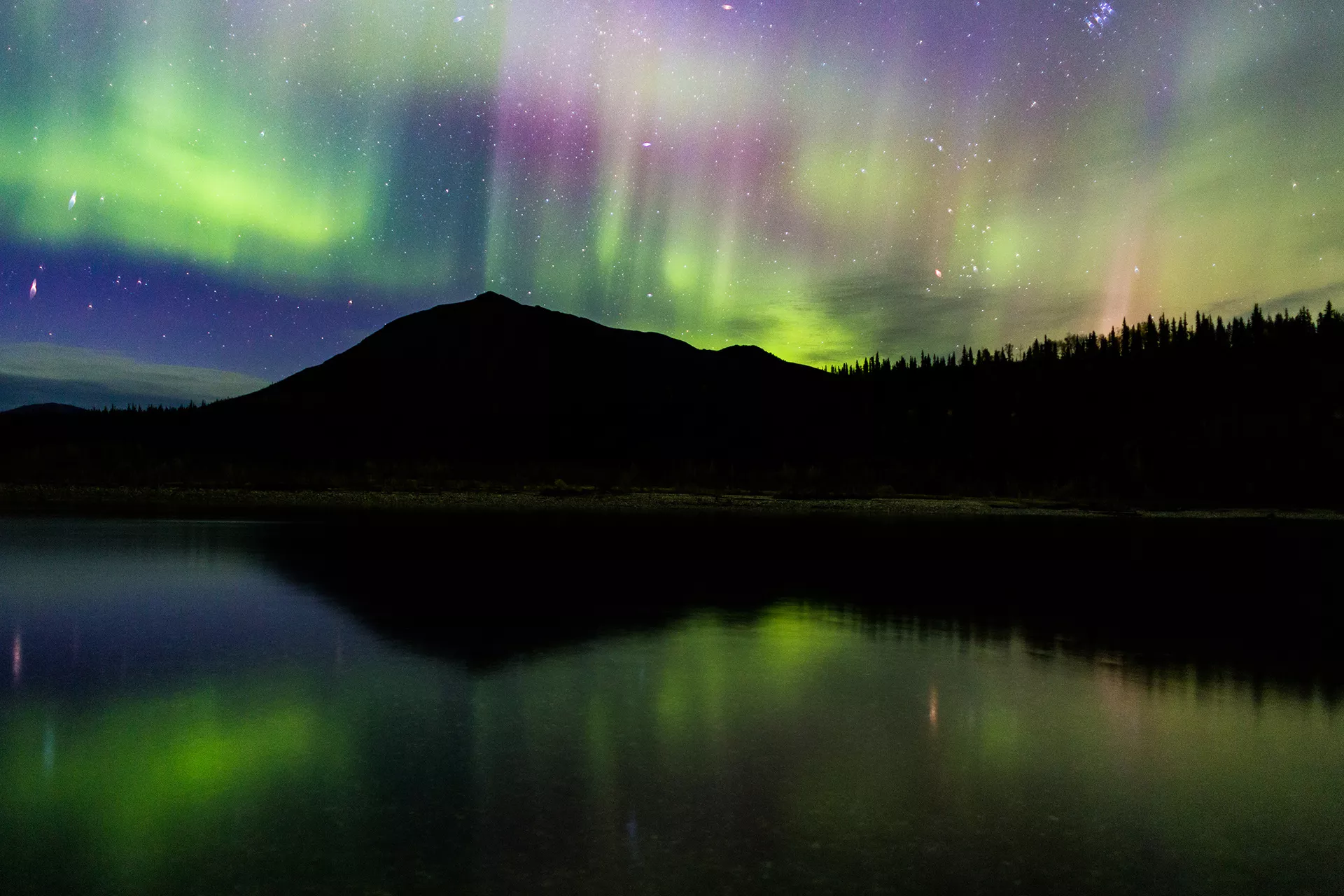
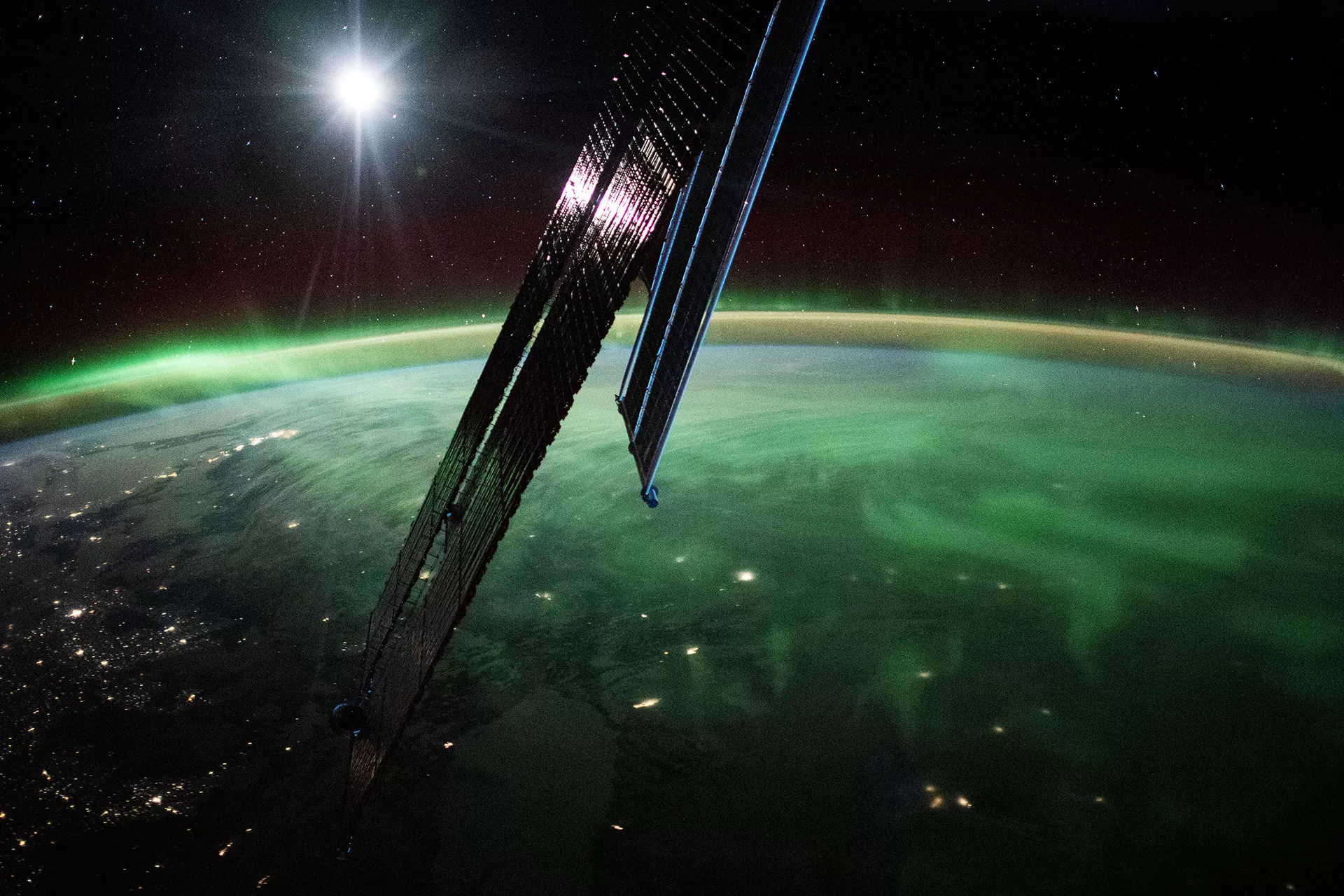
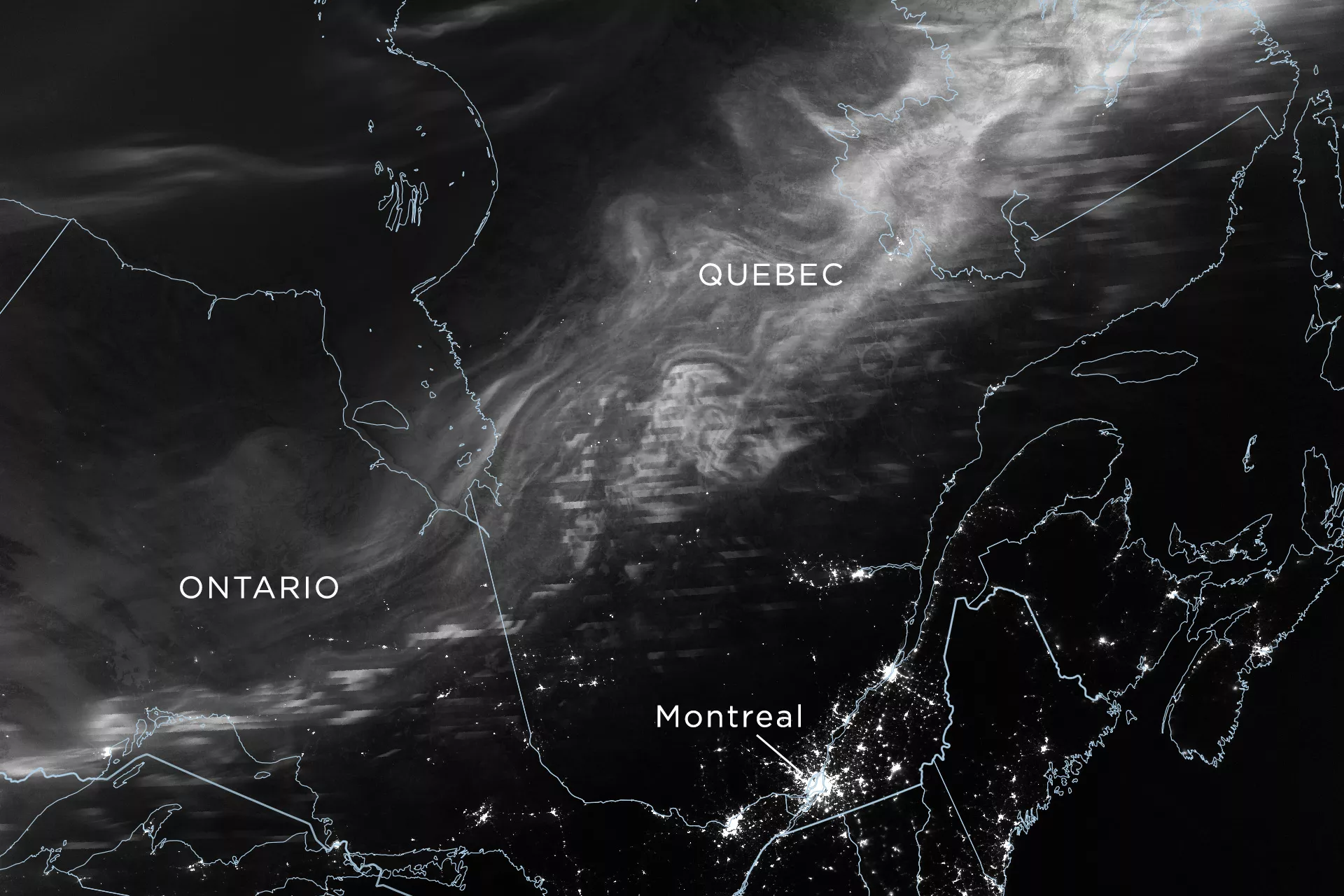
Objectives
While the JPSS satellites observe the aurora in grayscale, it can be fun to add a splash of color! For this activity, students will unleash their creativity to create a landscape of trees silhouetted against a night sky filled with mesmerizing auroras out of watercolors or tissue paper.
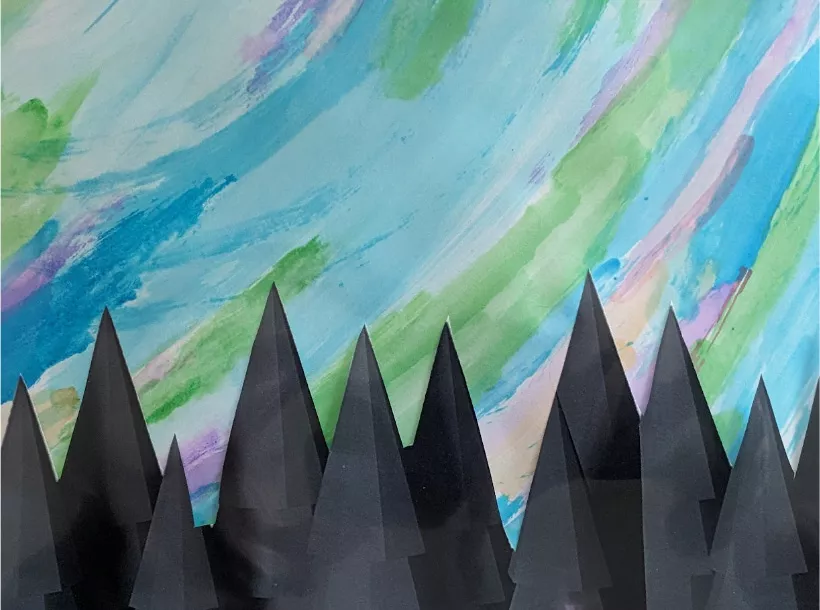
Craft a Colorful Aurora with Watercolors
You will need
- Thick white paper or cardstock
- Printed landscape silhouette (included in Activity PDF)
- Watercolors
- Paintbrush
- Glue
- Look through photos of auroras and the beautiful patterns they make in the night sky. The lights make swirls, stripes, and zig zags.
- Use watercolors to paint auroras on the paper. Every aurora is unique so feel free to experiment with shapes and patterns.
- Once the landscape has fully dried, cut out one of the landscape silhouettes provided on the last page and glue it across the bottom of the page.
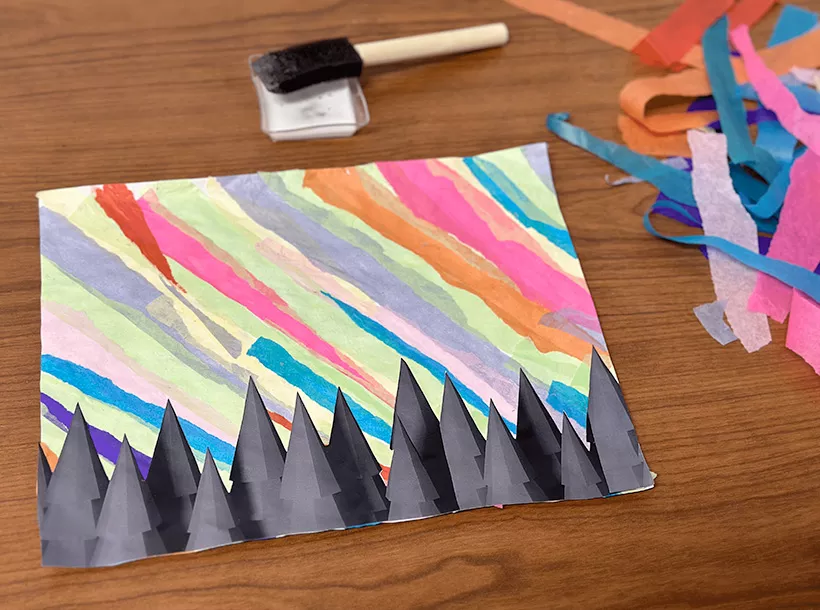
Create a Colorful Tissue Paper Aurora
You will need
- Thick white paper or cardstock
- Printed landscape silhouette (included in Activity PDF)
- Colorful tissue paper
- Glue
- Look through photos of auroras and the beautiful patterns they make in the night sky. The lights make swirls, stripes, and zig zags.
- Tear paper into long, thin strips. Glue the paper to the page to create an aurora collage.
- Tip: Diagonal patterns are easy and turn out well.
- Once the landscape has fully dried, cut out one of the landscape silhouettes provided on the last page and glue it across the bottom of the page.
Other Aurora Art Ideas:
- Use black construction paper, black glue or puffy paint to create the silhouette of the trees.
- Draw an aurora on an inkjet transparency sheet and hang it in a window as a suncatcher.
- Glue or paint the trees on the outside of a sheet protector so you can easily change the aurora image.
- Color the aurora with crayons, colored pencils, or markers for an easy activity with minimal supplies.
- Glue tissue paper to a black page and dot with glow-in-the-dark paint to make a night sky.
Can’t get enough of auroras?
Download and print a poster showing JPSS imagery of an aurora over the Arctic.
This stunning visualization of auroras over the Arctic was created using imagery captured by the day/night bands of the Visible Infrared Imaging Radiometer Suite (VIIRS) instrument aboard NOAA-21. These auroras, commonly called the Northern Lights, were created by the effects of a geomagnetic storm that reached the Earth on November 5-6, 2023.
